Working with official data on SDG16+
High-quality, accessible, timely, disaggregated and open data and statistics are essential in order to measure and monitor progress towards peaceful, just and inclusive societies
Unlike citizen-generated data, official data on the SDGs – including SDG16+ – are produced by national statistical offices (NSOs) and other institutions and administrations responsible for producing official statistics. Official data are normally gathered from formal government processes such as censuses, surveys (including household and population surveys), administrative records and expert assessments. In some cases, they may be gathered from ‘big data,’ using multiple sources of complex data sets. Ideally, all official data should be ‘open data,’ meaning that they are freely available for everyone to access, use and republish as they wish, without restrictions from copyright, patents or other mechanisms of control.1 In addition to supporting overall accountability for the SDGs, ensuring that all official data are ‘open’ directly supports SDG target 16.10 on public access to information.
High-quality, accessible, timely, disaggregated and open official data and statistics are essential in order to measure progress on the SDGs, including SDG16+. While governments need data to make informed decisions related to SDG16+ implementation, both government and non-governmental stakeholders – including civil society actors – need data to monitor progress towards peaceful, just and inclusive societies, especially for the groups that are the furthest behind. Evidence shows that monitoring and reporting are critical to driving action.2 When countries invest in measuring progress on SDG16+, greater effort is made to ensure actual progress towards peace, justice and inclusion.3
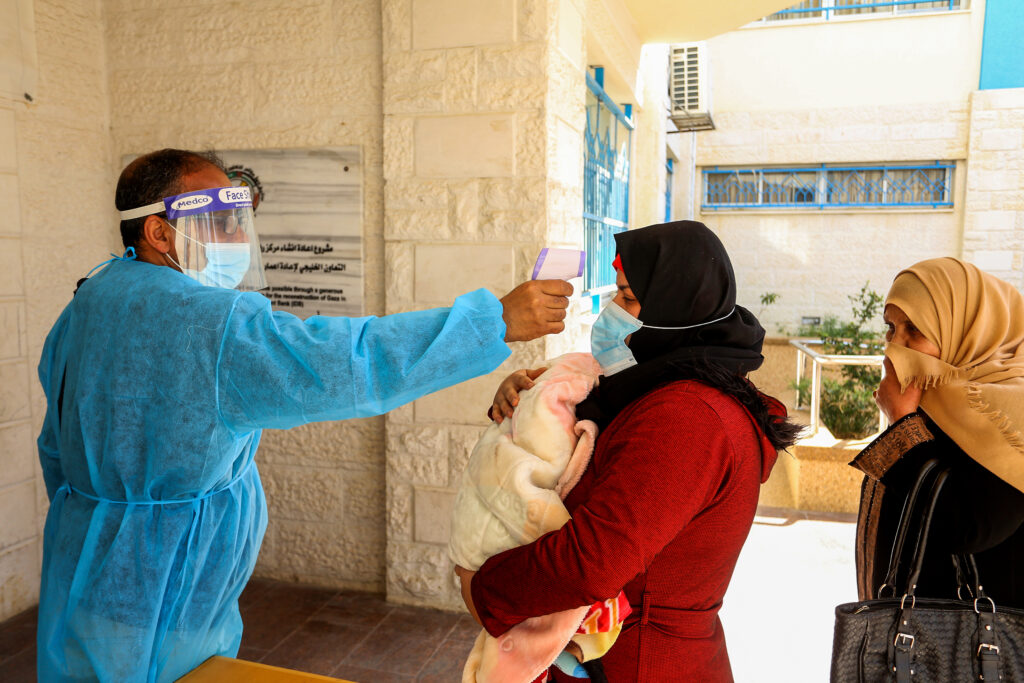
There are a number of ways that you can work with official data to support and promote accountability for SDG16+ commitments, including the following:
a. Make a strong public commitment to open data on the SDGs;
b. Identify and begin to publish some public information on SDG16+ as open data;
c. Develop a government-wide policy on open data, through an inclusive process, that sets standards for how the government will manage and release information on the SDGs, including SDG16+;
d. Create public listings of all government data related to SDG16+ targets;
e. Establish new legal rights for the public to access government data on the SDGs;
f. Proactively engage with and support data users to access data on SDG16+; and
g. Require that open data commitments apply to all organizations handling public data.
TIP: 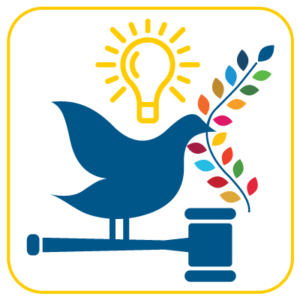

TIP:
In engaging with your NSO on the development of indicators for SDG16+, you can highlight examples from other countries where SDG16+ targets are being effectively measured and the indicators and methodologies developed to do so.10
Case Study


Case Study
Supporting Open and Quality Data for 2030 Agenda Commitments
Data Republica
Data Republica, created by Ceipei, is a digital platform focused on mapping sources related to the SDGs in Latin America and the Caribbean, strengthening capacity development and fostering content dissemination to build up the relationship between data and sustainable development. Created on the premise that open and quality data has become increasingly necessary for the design of public policies oriented to reach 2030 Agenda commitments, the platform aims to be a tool for sustainable development advocates eager to follow-up on the implementation progress of the SDGs.
Data Republica works to offer a data lab for sustainable development actors, which allows them to consult and analyze associated data sources to the SDGs, outline their relationships, write sustainable development narratives and offer capacity development tools.
The platform features four main components: Connect, Learn, Publish and Analyze.
The Connect feature is a data ecosystem for sustainable development, which offers data sources from Mexico, Colombia and Costa Rica, from various sectors, linked to the 17 SDGs. This mapping makes available to users a tool that allows having relevant information to measure progress in the implementation of the 2030 Agenda.
Learn offers virtual and face-to-face training on issues related to the sustainable development agenda and the technical elements for managing and analyzing data for narrative construction.
Publish is a co-creation space for the visualization and publication of data narratives on topics related to the SDGs, through different resources and media.
Analyze showcases the contribution of the private sector to the implementation of the 2030 Agenda. It allows users to download aggregated databases that are associated with SDGs measurement.
Key Take-Aways: Open and quality data is necessary for well-designed public policies that will work to accomplish the 2030 Agenda.
Mainstreaming SDG 16: Using the Voluntary National Review to Advance More Peaceful, Just and Inclusive societies (Global Alliance and TAP Network, 2020)
This resource provides policy guidance, case studies and good practices on advancing SDG 16 implementation by more effectively leveraging the Voluntary National Review (VNR) and post-VNR processes. It contains a chapter on ‘Data and Statistics through Official and Unofficial Sources.’ Available at: https://www.sdg16hub.org/topic/mainstreaming-sdg-16-using-voluntary-national-review-advance-more-peaceful-just-and-inclusive
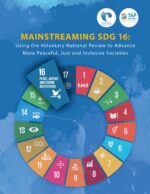
SDG Accountability Handbook: A Practical Guide for Civil Society (TAP Network, 2018)
This handbook provides guidance on the different approaches and steps that can be taken by civil society to ensure national government accountability for the SDGs. It includes a chapter on ‘Using and Improving Data.’ Available at: https://sdgaccountability.org/
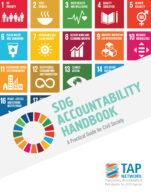
Making them Count: Using indicators and data to strengthen accountability for the SDGs (Saferworld, TAP Network, UNDP and the SDG16 Data Initiative, 2016)
This note draws upon a consultation workshop held in December 2016, which focused on whether and how the indicators and data linked to the SDGs could strengthen accountability on issues of peace, justice, governance and human rights. Available at: http://tapnetwork2030.org/wp-content/uploads/2015/04/SDG-16-Making-them-Count-Workshop-Summary.pdf
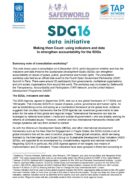
SDG (Goal 16) Data Indicators (TAP Network, multiple years)
This section of the TAP Network’s website provides resources on the issue of data and the development of indicators for SDG 16. Available at: http://tapnetwork2030.org/our-work/sdg-goal-16-indicators/

This Handbook – primarily targeted towards national statistical agencies – provides a foundation for the development of international statistical guidance and standards for eight dimensions of governance: non-discrimination and equality; participation; openness; access to and quality of justice; responsiveness; absence of corruption; trust; and safety and security. It is intended as a guide for those wishing to understand, produce and analyze governance statistics.
Available at: https://www.sdg16hub.org/content/praia-group-handbook-governance-statistics
This guidance note builds on the recommendations of the ‘Handbook on Governance Statistics,’ examining eight dimensions of governance from the perspective of COVID-19. It serves as an executive summary of the previous handbook and provides practical measurement advice and some recommended indicators, including on SDG 16.
Available at: https://www.sdg16hub.org/content/governance-statistics-covid-19-era-praia-city-group-guidance-note
The United Nations’ official website for information on the development and implementation of an indicator framework for the follow-up and review of the 2030 Agenda. There is information on: the Inter-agency and Expert Group on SDG Indicators (IAEG-SDGs); the High-level Group for Partnership, Coordination and Capacity-Building for statistics for the 2030 Agenda for Sustainable Development (HLG-PCCB); the SDG indicators; and the SDG Monitoring and Reporting Toolkit for UN Country Teams.
Available at: https://unstats.un.org/sdgs/
The CARE Community Score Card serves as the basis of much of the social accountability work of the past two decades.
Available at: https://www.care.org/sites/default/files/documents/FP-2013-CARE_CommunityScoreCardToolkit.pdf
The dissemination platform of the Statistics Division of UN DESA, which provides access to data compiled through the UN system in preparation for the Secretary-General’s annual report on “Progress towards the Sustainable Development Goals.” Users can search for data on the global SDG indicators by geographic area – including global, regional and country levels, specific groupings of countries and developed/developing regions – and years.
Available at: https://unstats.un.org/sdgs/indicators/database/
This illustrative table of human rights indicators outlines structural, process and outcome indicators for a number of different human rights. It also takes into account the global indicators for the 2030 Agenda by identifying SDGs-related or corresponding indicators. Available in English and Russian.
Available at: https://www.ohchr.org/Documents/Issues/HRIndicators/SDG_Indicators_Tables.pdf
An open-access resource that presents data across all available indicators from the Our World in Data database, using official statistics from the UN and other international organizations. It serves as an interactive hub where users can explore and track global, regional and country-level progress towards the SDGs through interactive data visualizations.
Available at: https://sdg-tracker.org/
A data catalog of relevant indicators drawn from the World Development Indicators and reorganized according to the goals and targets of the SDGs. There are links to the Databank, the Atlas of Sustainable Development Goals and the SDG Dashboard, the latter of which is searchable by goal, target, indicator and country.
Available at: http://data.worldbank.org/data-catalog/sustainable-development-goals
A multi-stakeholder global network that helps stakeholders across countries and sectors fully harness the data revolution for sustainable development. There is information on partner initiatives by country/territory, as well as functions to search for partners, resources and initiatives by type, topic, SDG and country/territory.
Available at: https://www.data4sdgs.org/
A collective project by a consortium of organizations that compiles existing global data to track progress towards the achievement of SDG 16. Data for the official global indicators along with proposed complementary indicators are provided for each SDG 16 target, with functions to search by country and compare up to three different countries. Available in the six official UN languages.
Available at: https://www.sdg16.org/
This annual report – part of a series aimed at evaluating global progress on SDG 16 – seeks to provide a holistic view and understanding of progress on the SDG 16 targets. It provides an evidence base for identifying gaps in the implementation and monitoring of SDG16, and for altering course to accelerate implementation where needed.
Available at: https://drive.google.com/file/d/1TuSISe7KJCmU1UXCTAqfVvgm8Q0hf2BJ/view
This annual report – focused on SDG16+ – discusses what data for SDG16+ indicators is currently available, what sources can be used as proxies, the likely timeline for obtaining missing data and the best mechanisms for collecting data in ten case studies.
Available at: https://www.economicsandpeace.org/wp-content/uploads/2020/08/SDG16Progress-Report-2019-web.pdf
This report – based on a global technical workshop – compiles good practices and resources to help monitor SDG16+. Topics covered include: monitoring thematic issues related to SDG 16 such as corruption, violence, access to information and fundamental freedoms; cross-cutting SDG16+ monitoring issues such as the nationalization of indicators; alignment of human rights and SDG implementation, monitoring and reporting; data collection and disaggregation; alternative data sources; stakeholder engagement; and institutionalization of monitoring mechanisms.
Available at: https://www.humanrights.dk/publications/ways-forward-monitoring-sdg-16
A community of governance data producers, users, and funders committed to the production and use of high-quality data to advance democratic governance reforms in countries. It provides aggregated data on governance, with functions to search by country and to compare countries.
Available at: http://www.governancedata.org/
This guide includes a chapter on open government data with useful information and detailed recommendations on the practical steps that governments can take to make data more open.
Available at: https://www.opengovpartnership.org/wp-content/uploads/2019/05/open-gov-guide_summary_all-topics1.pdf
Transparency, Accountability &
Participation (TAP) Network
Address: 205 E 42nd St.
New York, NY 10017
Email:
secretariat@tapnetwork2030.org